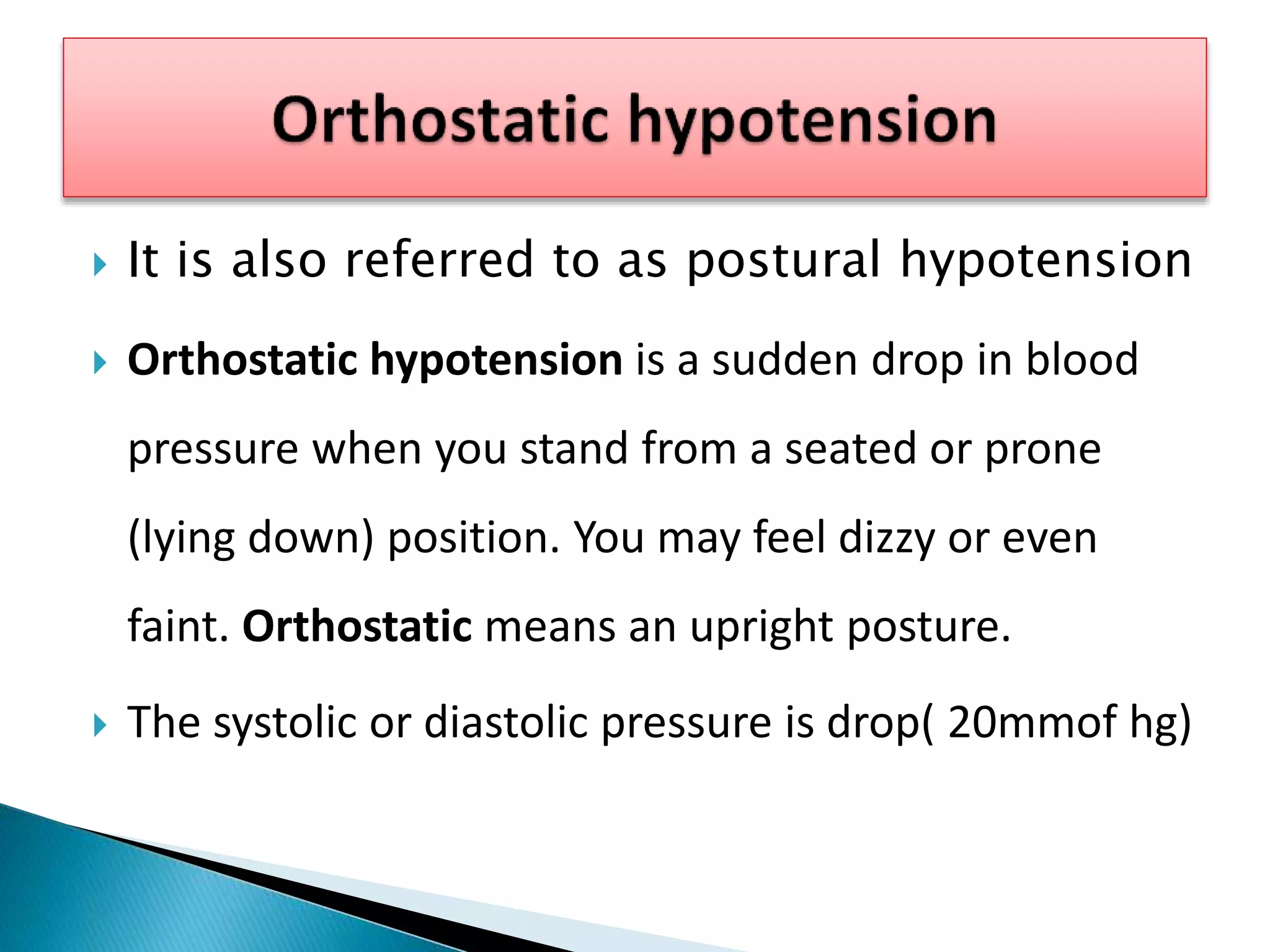Blood pressure is measured using a sphygmomanometer, which includes an inflatable cuff, pressure gauge, and stethoscope. The cuff is wrapped around the upper arm and inflated until the artery is compressed. As the cuff deflates slowly, sounds known as Korotkoff sounds can be heard through the stethoscope. The first sound indicates systolic pressure when the heart contracts, and the disappearance of sounds indicates diastolic pressure when the heart relaxes. Blood pressure provides important health information and is used to diagnose and monitor conditions like hypertension.










![AGE BLOOD PRESSURE [MM of Hg]
New born 40(mean)
1 month 85/54
1 year 95/65
6 year 105/65
10 to 13 years 110/65
14to 17 years 119/75
18 years and older <120/<80](https://image.slidesharecdn.com/bloodpressure-210924061654/75/Blood-pressure-11-2048.jpg)




















